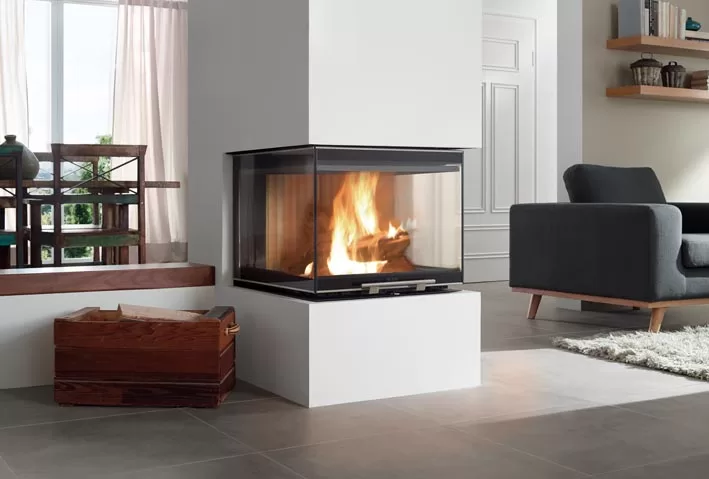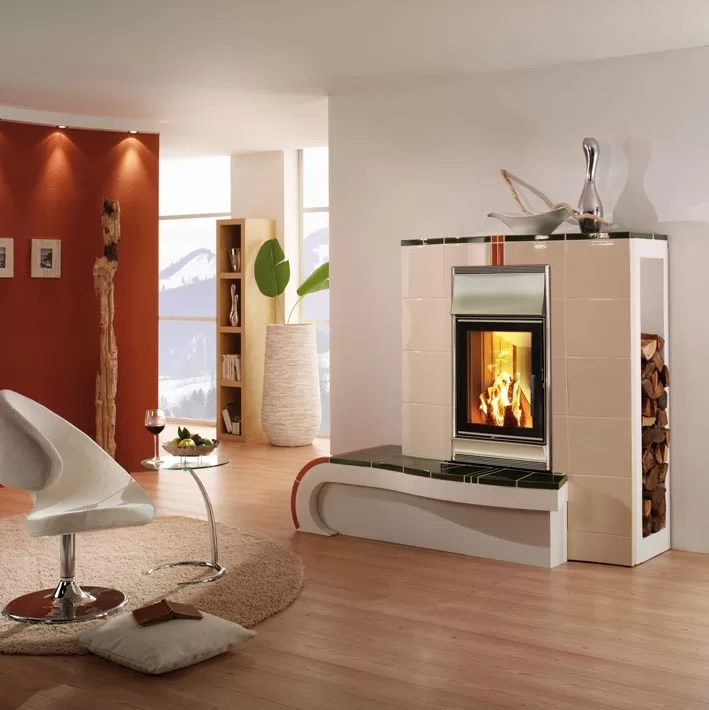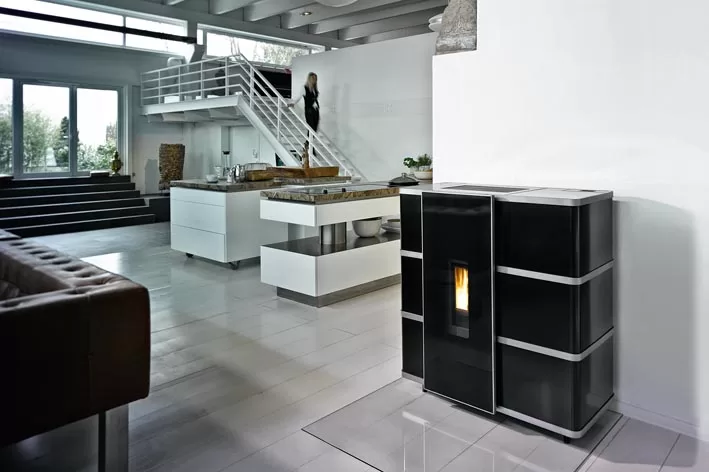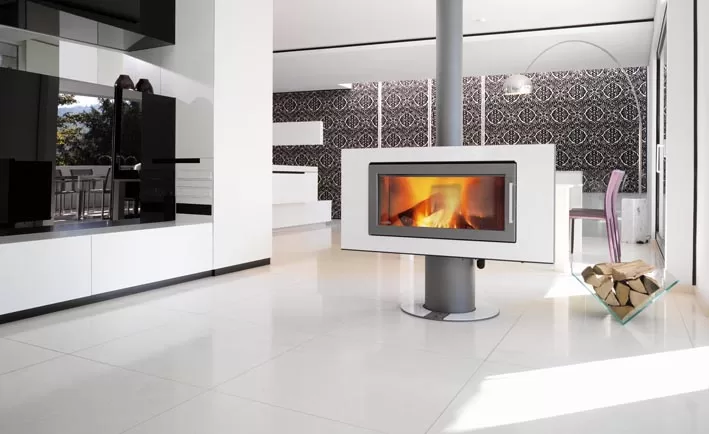Even in Australia, with our temperate climate, the fascination for heating with wood is as strong as ever which leads building designers and interior designers to seek ways of creating cosy warmth in the home with CO²-neutral wood heating systems.
 On cold days today, the occupants of a house gather together comfortably in front of a modern, more contained version of an open fire – a traditional tiled stove, enclosed fire, or wood burner that radiates cosy warmth. The rustling, crackling, flickering and smouldering of the fire helps them to relax after a stressful day. Furthermore, the gentle heat of a stove, for example, contains a good dose of long-wave radiation, which penetrates deep beneath the skin in a soothing way. Tests and measurements carried out by Austrian research institutes have shown that heat from stoves and burners encourages not only our mental relaxation but also our resilience.
On cold days today, the occupants of a house gather together comfortably in front of a modern, more contained version of an open fire – a traditional tiled stove, enclosed fire, or wood burner that radiates cosy warmth. The rustling, crackling, flickering and smouldering of the fire helps them to relax after a stressful day. Furthermore, the gentle heat of a stove, for example, contains a good dose of long-wave radiation, which penetrates deep beneath the skin in a soothing way. Tests and measurements carried out by Austrian research institutes have shown that heat from stoves and burners encourages not only our mental relaxation but also our resilience.
 Modern standalone domestic stoves contribute positively to climate protection. This is because, in general, wood burns in a CO²-neutral way; that is, only as much carbon dioxide is released in burning, as was absorbed by the tree when it was still growing. In addition, wood burning conserves the supply of fossil energy sources.
Modern standalone domestic stoves contribute positively to climate protection. This is because, in general, wood burns in a CO²-neutral way; that is, only as much carbon dioxide is released in burning, as was absorbed by the tree when it was still growing. In addition, wood burning conserves the supply of fossil energy sources.
 Modern, low-emission and energy-efficient single room stoves are very versatile and flexible. In terms of both appearance and heating technology, they can fit into every living environment, be it a classic, puristic, timeless or modern home, a low-energy house or an old building. An individually tailored comfortable ambiance can be achieved with a wide range stoves in different sizes, shapes, designs and surface materials, and with appropriate heating technology.
Modern, low-emission and energy-efficient single room stoves are very versatile and flexible. In terms of both appearance and heating technology, they can fit into every living environment, be it a classic, puristic, timeless or modern home, a low-energy house or an old building. An individually tailored comfortable ambiance can be achieved with a wide range stoves in different sizes, shapes, designs and surface materials, and with appropriate heating technology.
Large, panoramic glass panels (in some cases, sliding doors) are very popular on stoves and burners, because they make it possible to view the flames from several sides. Small tiled stoves that can be customised in a variety of ways are becoming popular in new builds. They make it possible to enjoy a fire in a compact space and they give off a gentle radiant heat.
 When tiled stoves, enclosed fires, wood-burning stoves and pellet burners are connected to a back boiler, heating can be even more environmentally-friendly, efficient and cost-effective. A heat exchanger, which is usually installed in the fire, makes it possible to connect the stove to the central heating system by means of a thermal tank. On cold days, for example, the single room heater can provide an effective supplement to an electric heat pump or a gas condensing boiler, and reduce its energy consumption. At the same time, heat emission in the place where the stove is installed can be reduced, so that the room does not overheat, even in very well insulated houses. Pellet-burning stoves with storage tanks enable the heating to operate automatically, uninterruptedly and according to need. It is ideal to use an electronic combustion control with regard to emissions and energy efficiency. If this is combined with a touch panel, a remote control or even the wireless network in the house and a Smartphone or tablet, the cosy warmth can be controlled even more conveniently – and that is without having to leave the comfort of the sofa.
When tiled stoves, enclosed fires, wood-burning stoves and pellet burners are connected to a back boiler, heating can be even more environmentally-friendly, efficient and cost-effective. A heat exchanger, which is usually installed in the fire, makes it possible to connect the stove to the central heating system by means of a thermal tank. On cold days, for example, the single room heater can provide an effective supplement to an electric heat pump or a gas condensing boiler, and reduce its energy consumption. At the same time, heat emission in the place where the stove is installed can be reduced, so that the room does not overheat, even in very well insulated houses. Pellet-burning stoves with storage tanks enable the heating to operate automatically, uninterruptedly and according to need. It is ideal to use an electronic combustion control with regard to emissions and energy efficiency. If this is combined with a touch panel, a remote control or even the wireless network in the house and a Smartphone or tablet, the cosy warmth can be controlled even more conveniently – and that is without having to leave the comfort of the sofa.
Article and images courtesy ISH. For more information visit ish.messefrankfurt.com






























